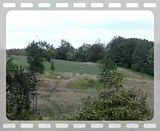Ok. The old lady who lives behind me is letting 2 mulberry trees grow just on the other side of my fence. If anyone has ever dealt with a mulberry tree they suck. Too add to it I have a cherry and apple tree on my side and her trees will end up overshadowing mine and will starve them of sun. Is there any way to kill a tree and not look like I killed it? A friend says to drive a copper nail into them. They're only about 2" - 3" diameter right now but these things grow pretty fast. To me they are a weed not a tree.









 Reply
Reply








